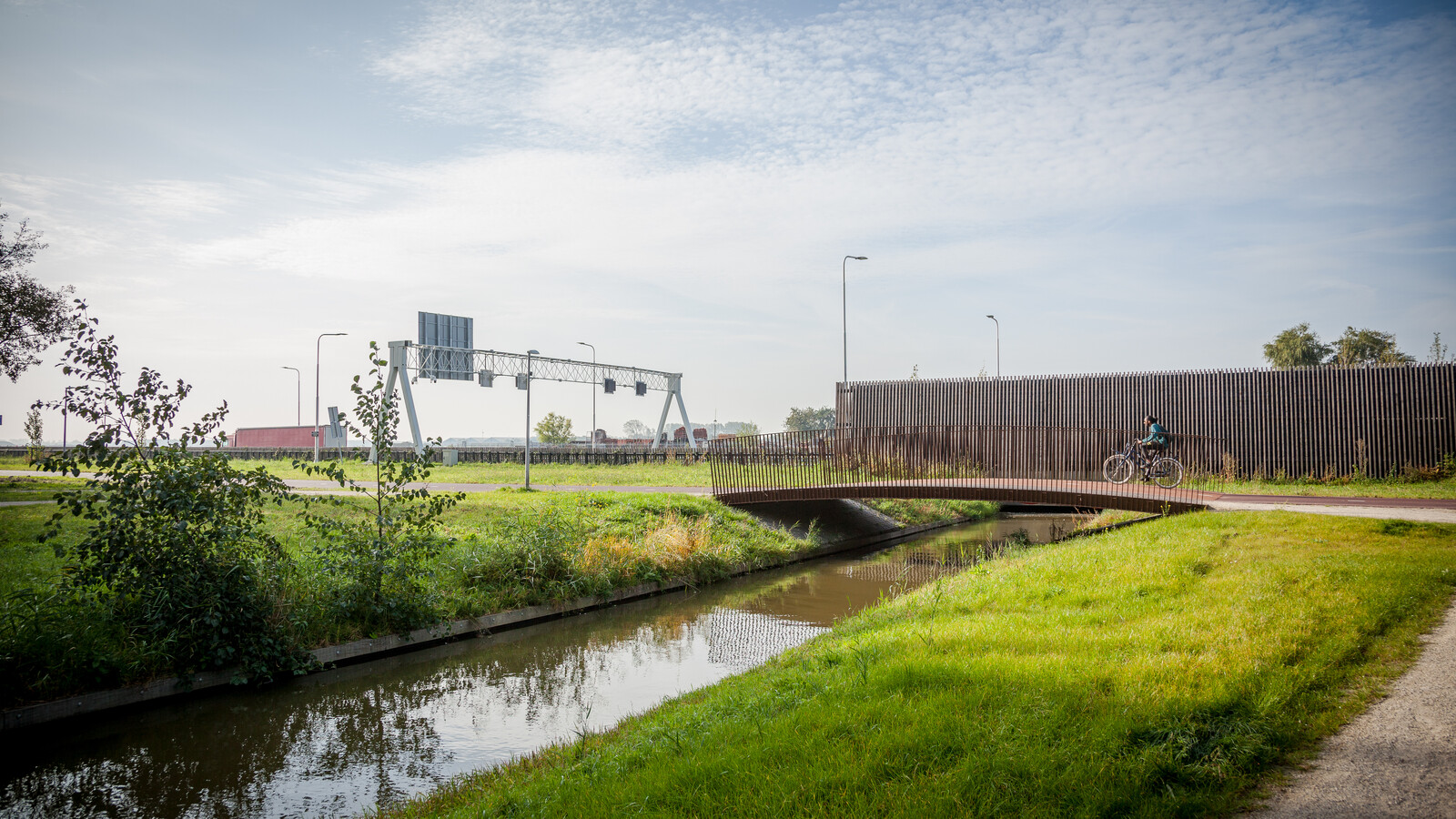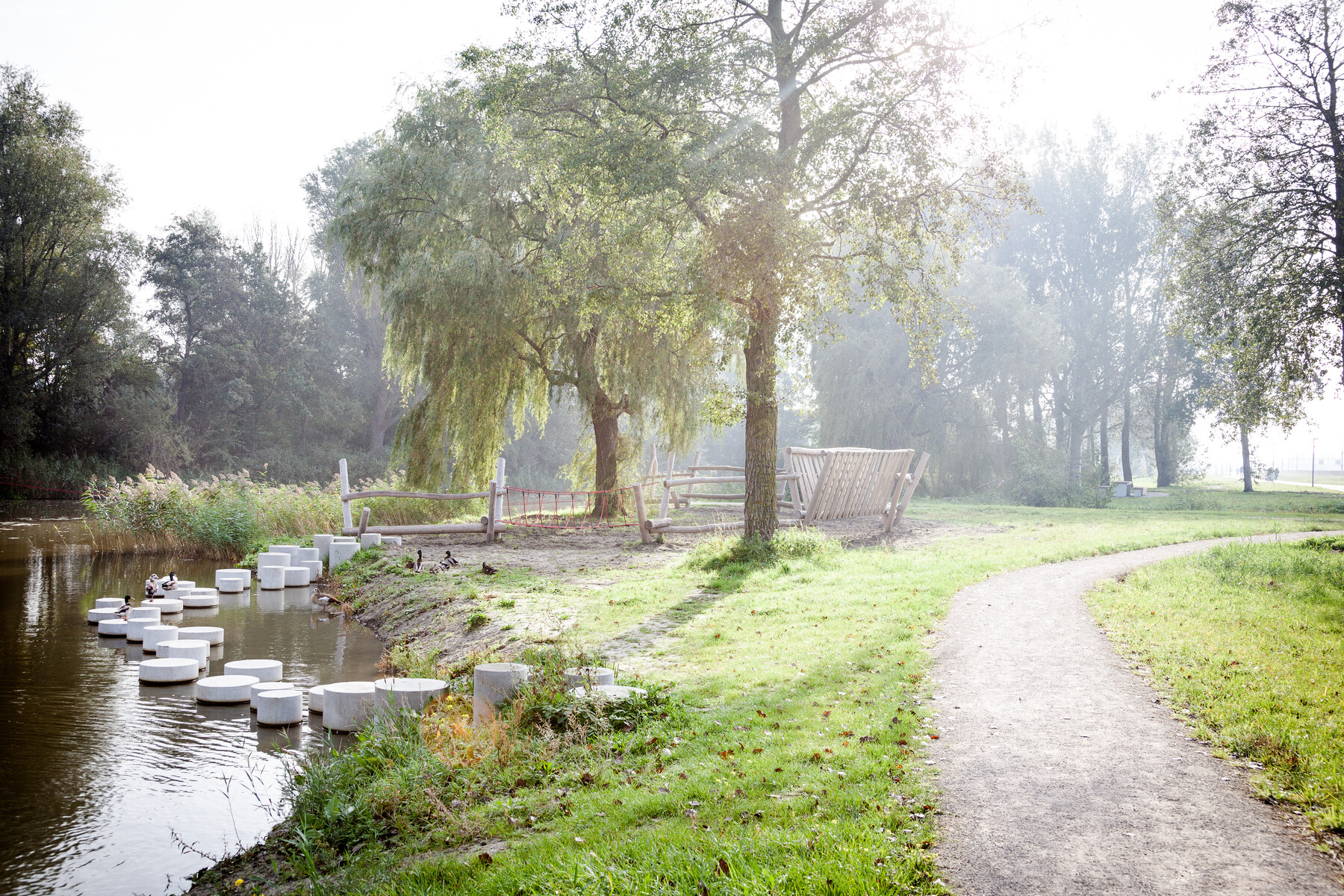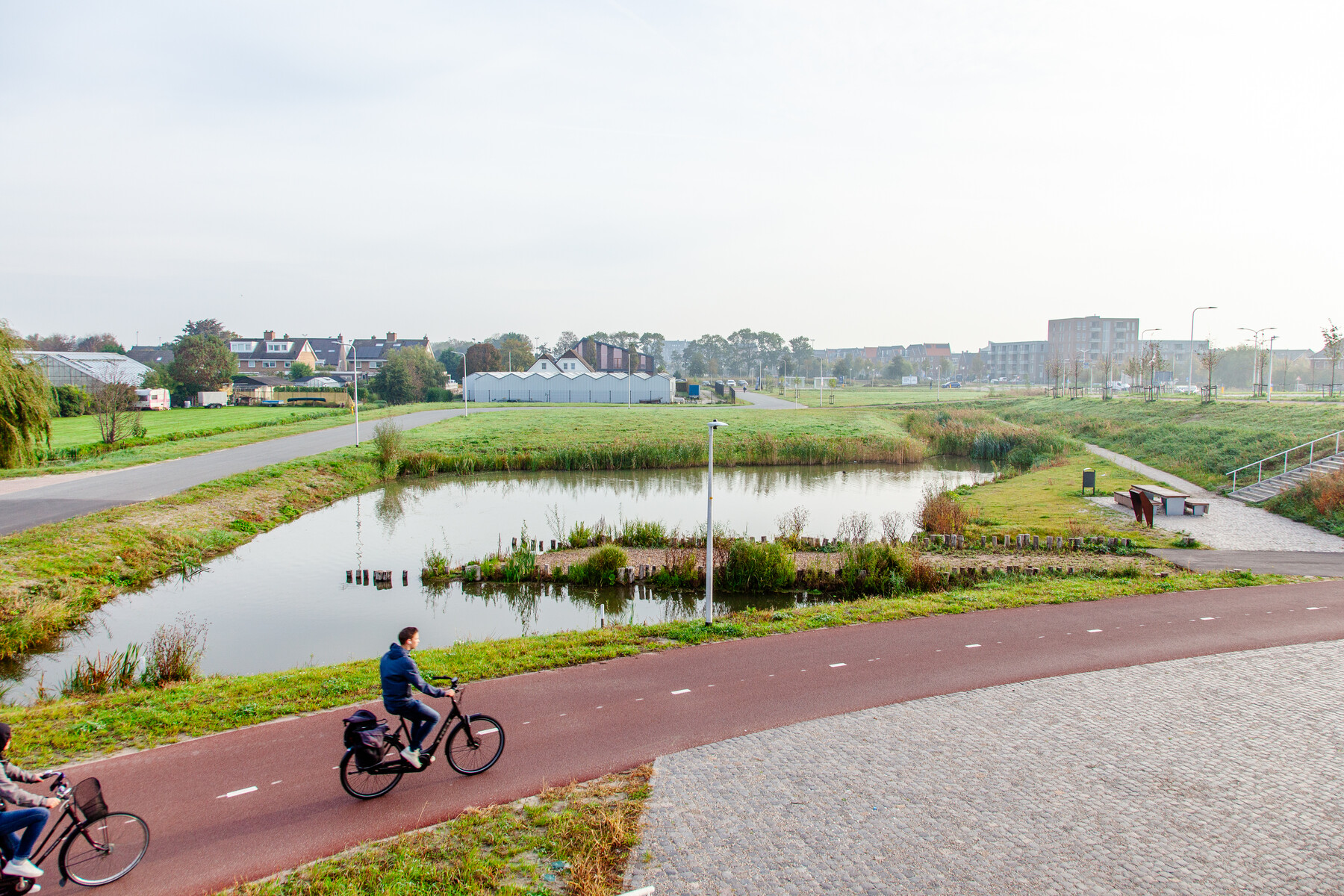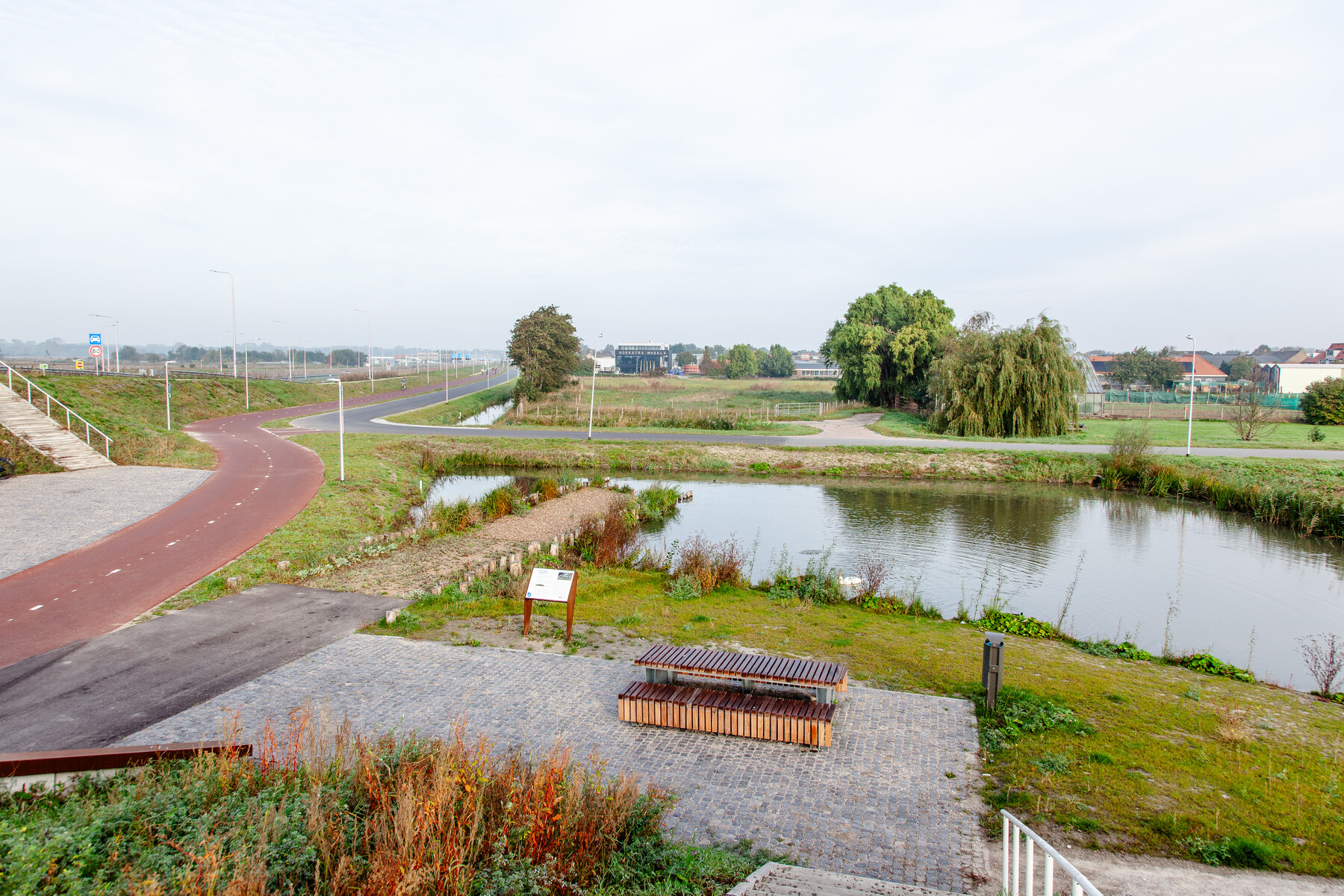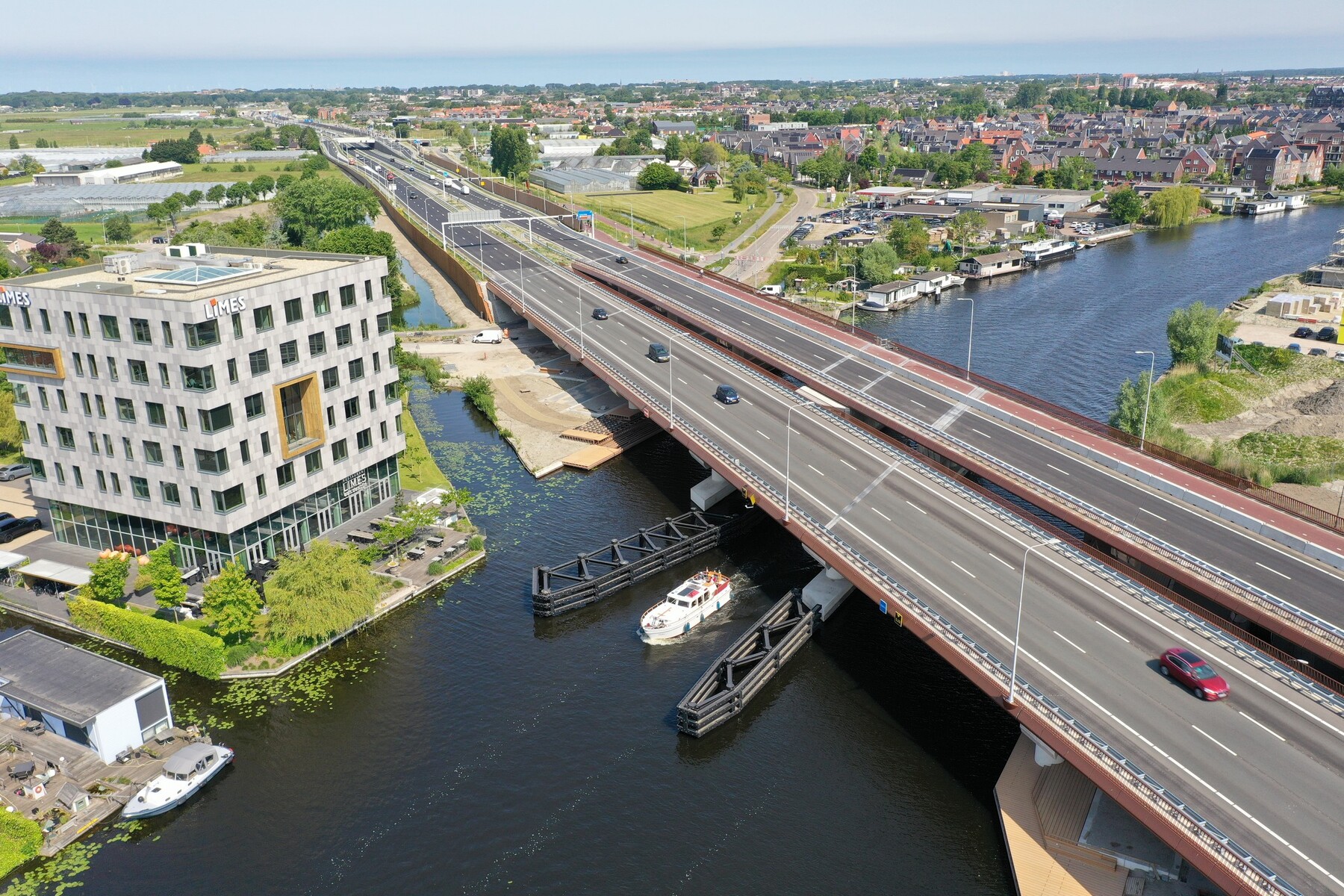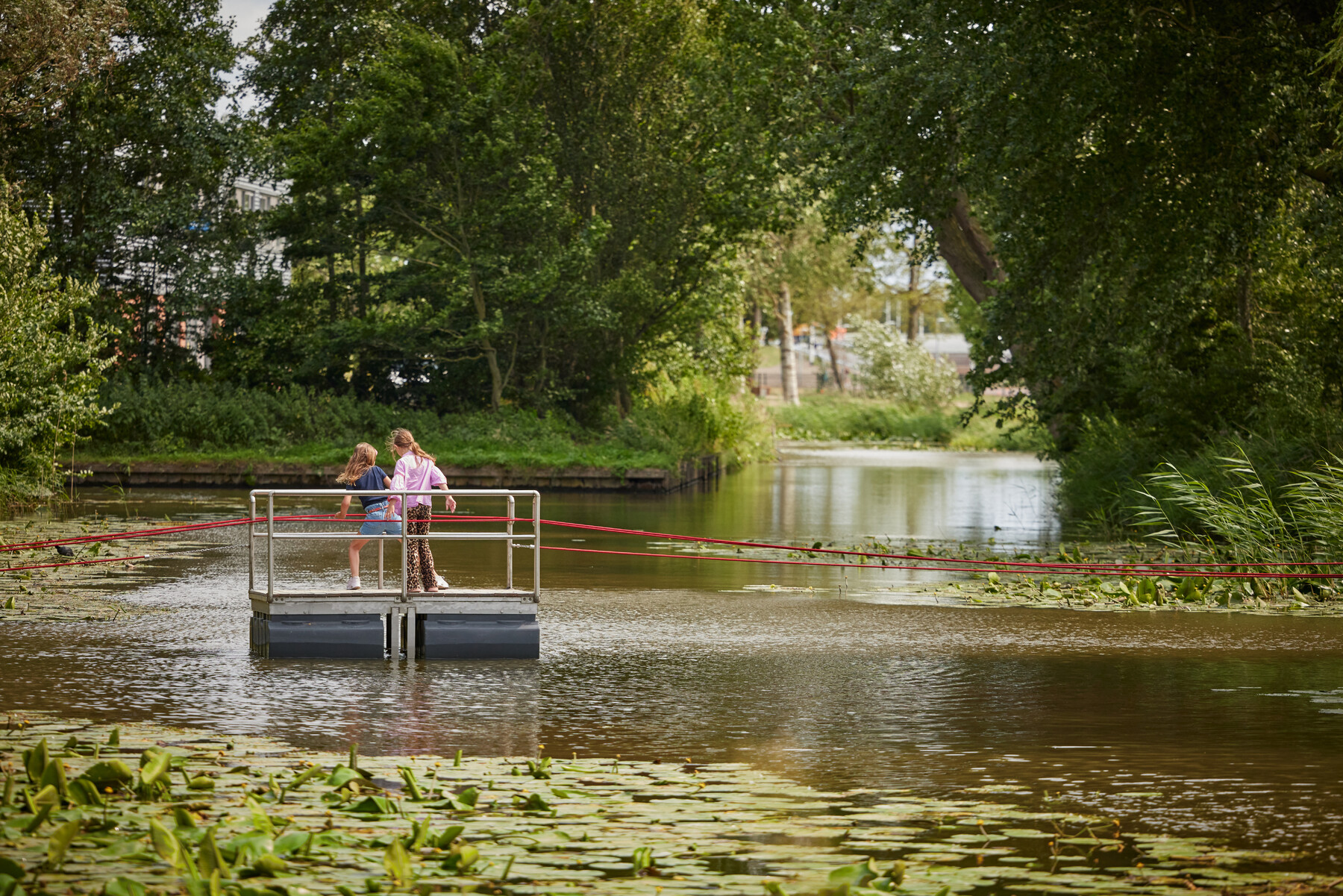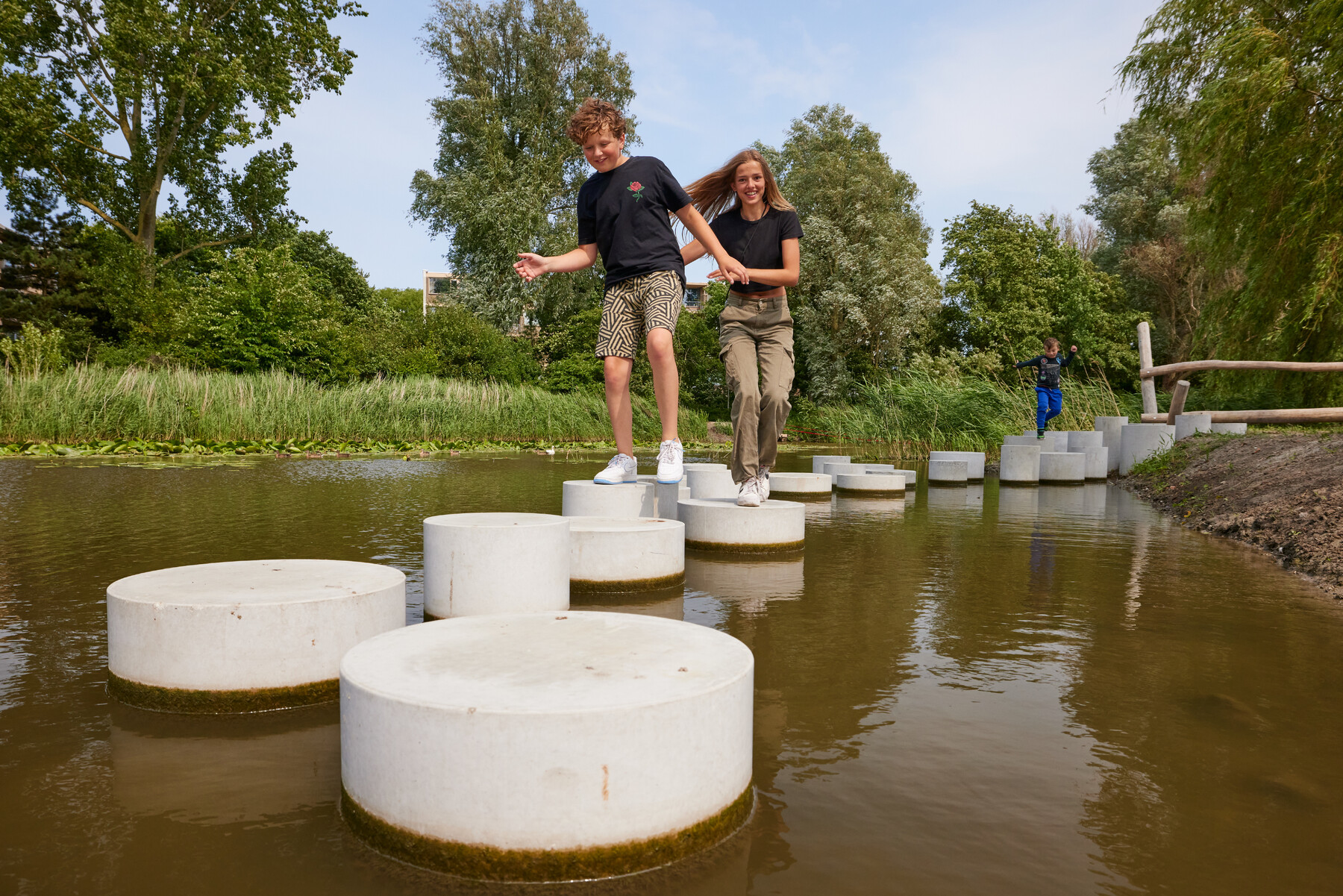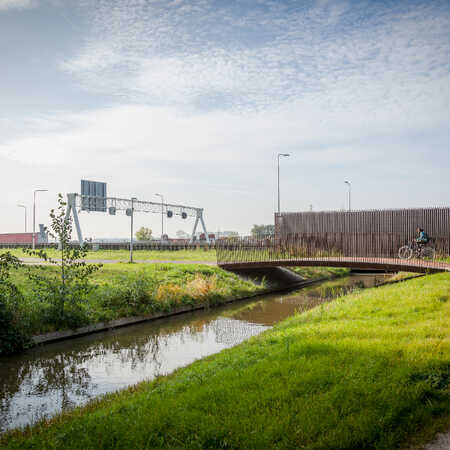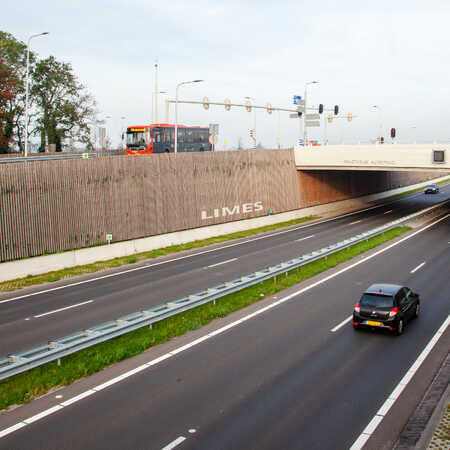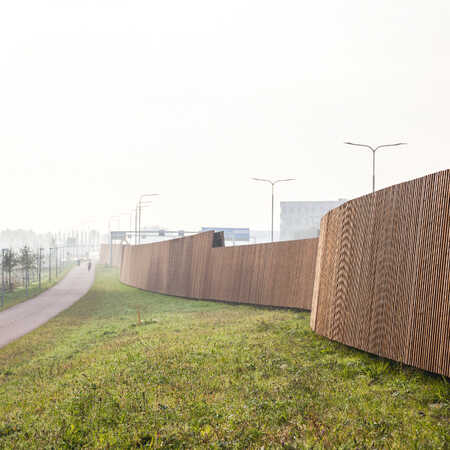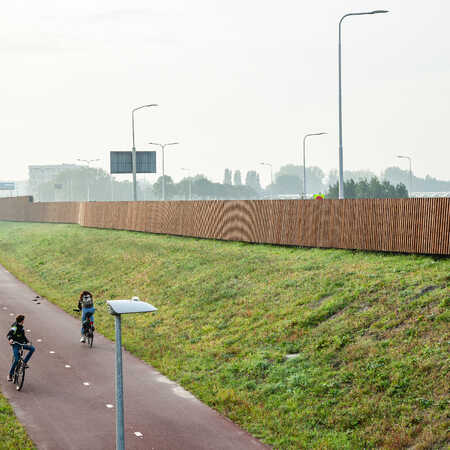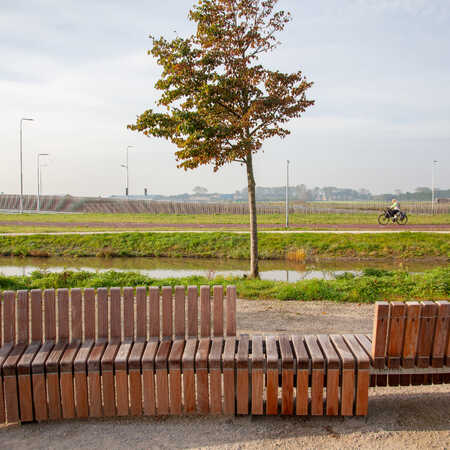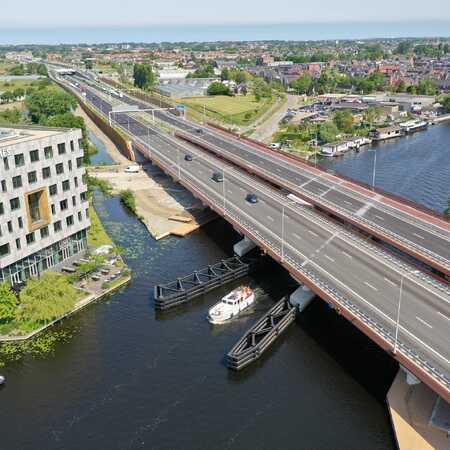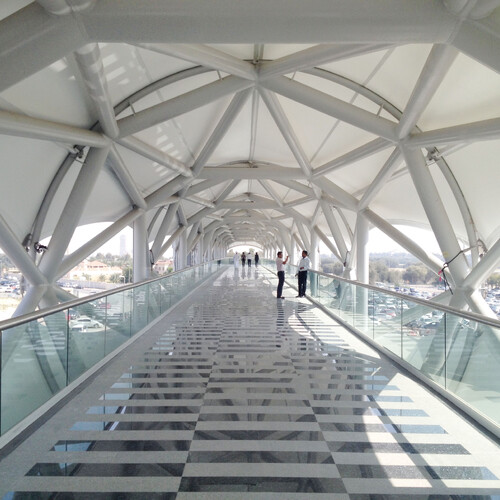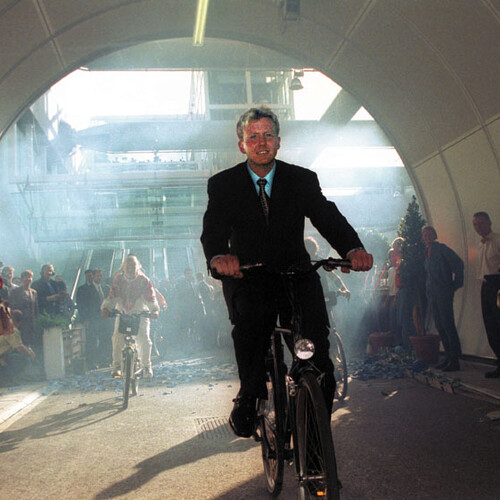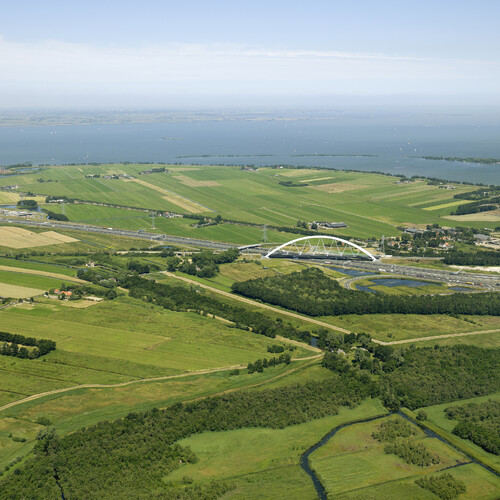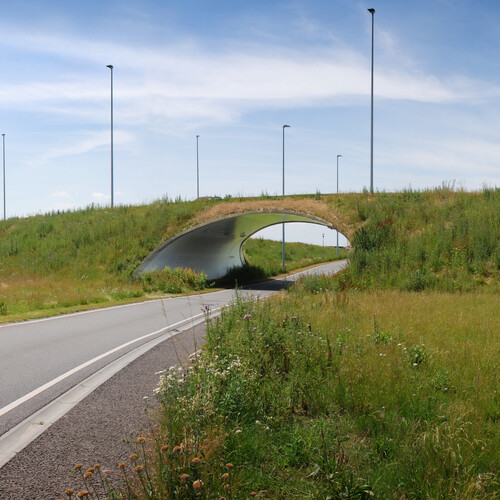Adapted to the landscape
With a large residential extension planned at Valkenburg, the provincial authority considers it a high priority to ensure that the infrastructure is integrated as green as possible. The widened N206, the new bus lanes and the new high-speed bicycle paths have to be designed in a way that adapts to the landscape and causing as little harm as possible. The design that the architectural office ZJA and Bosch Slabbers landscape architects made for the N206 Tjalmaweg includes a number of innovative elements to make sure that those design considerations are met. These innovations do not only relate to adaptating to the landscape but also to sustainable methods of building and respect for the history of the landscape.
